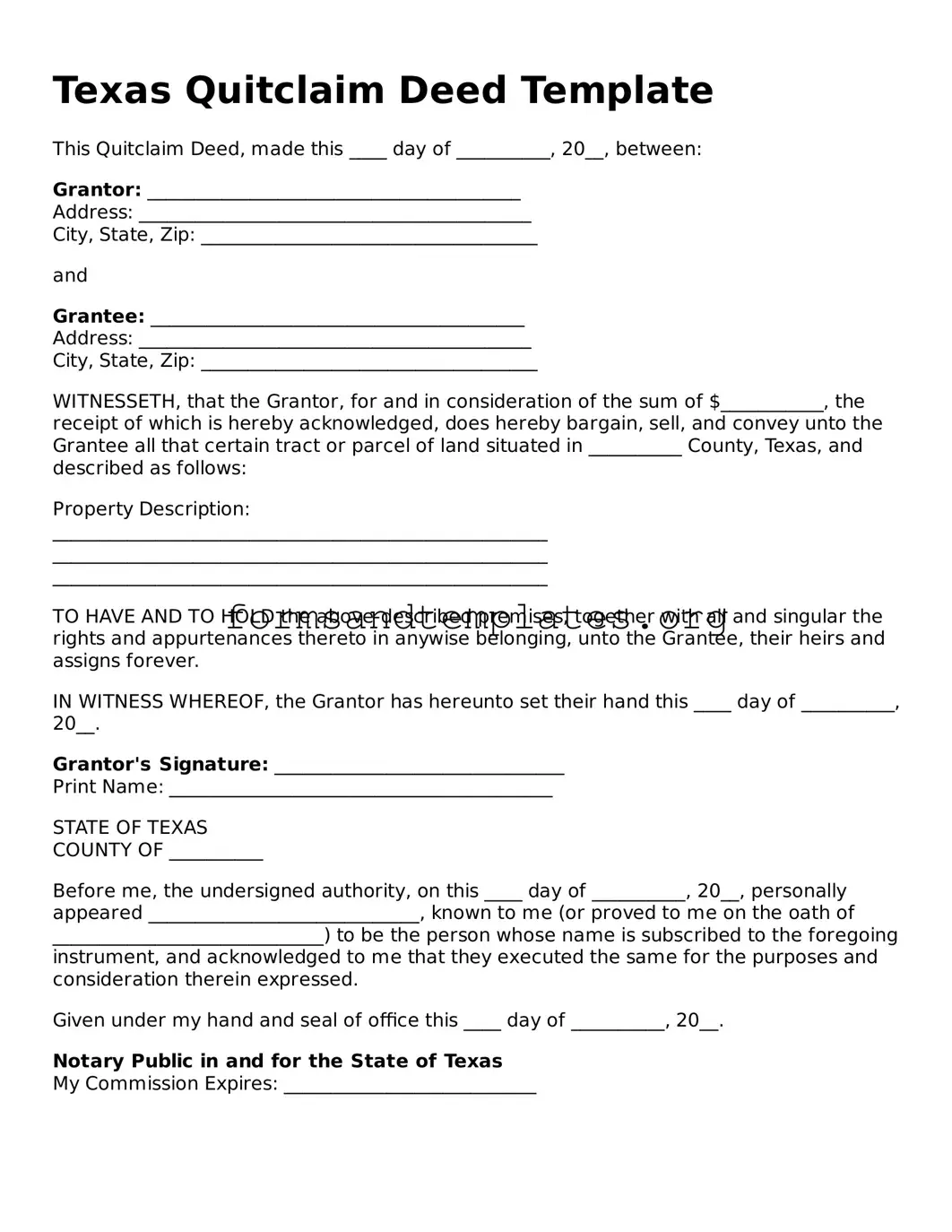Texas Quitclaim Deed Template
This Quitclaim Deed, made this ____ day of __________, 20__, between:
Grantor: ________________________________________
Address: __________________________________________
City, State, Zip: ____________________________________
and
Grantee: ________________________________________
Address: __________________________________________
City, State, Zip: ____________________________________
WITNESSETH, that the Grantor, for and in consideration of the sum of $___________, the receipt of which is hereby acknowledged, does hereby bargain, sell, and convey unto the Grantee all that certain tract or parcel of land situated in __________ County, Texas, and described as follows:
Property Description:
_____________________________________________________
_____________________________________________________
_____________________________________________________
TO HAVE AND TO HOLD the above-described premises, together with all and singular the rights and appurtenances thereto in anywise belonging, unto the Grantee, their heirs and assigns forever.
IN WITNESS WHEREOF, the Grantor has hereunto set their hand this ____ day of __________, 20__.
Grantor's Signature: _______________________________
Print Name: _________________________________________
STATE OF TEXAS
COUNTY OF __________
Before me, the undersigned authority, on this ____ day of __________, 20__, personally appeared _____________________________, known to me (or proved to me on the oath of _____________________________) to be the person whose name is subscribed to the foregoing instrument, and acknowledged to me that they executed the same for the purposes and consideration therein expressed.
Given under my hand and seal of office this ____ day of __________, 20__.
Notary Public in and for the State of Texas
My Commission Expires: ___________________________
